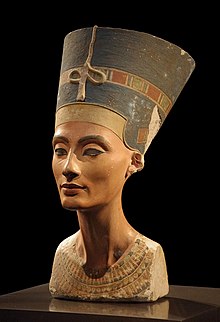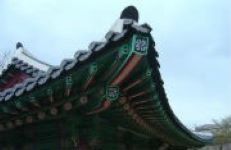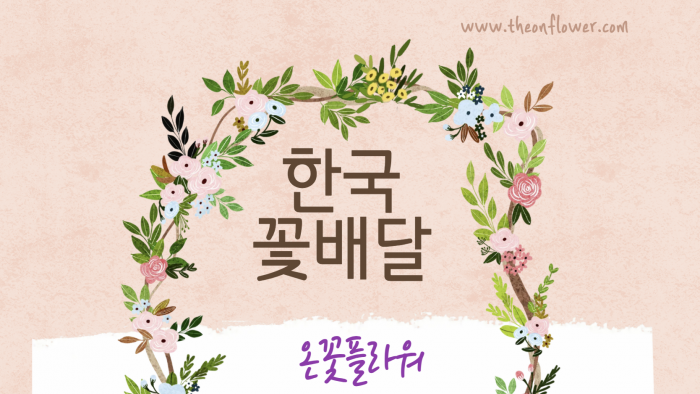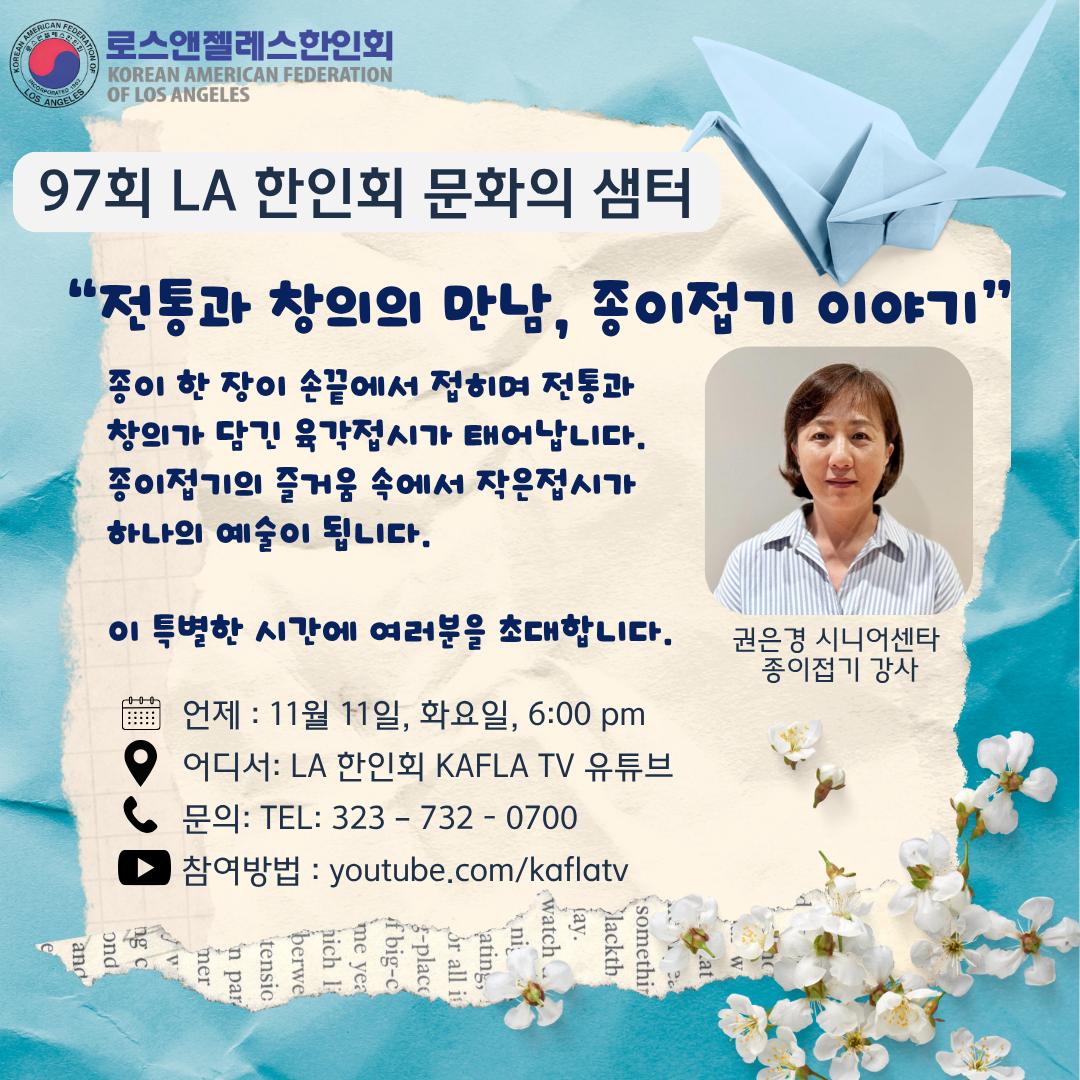- 한민족사를 이해하기 위한 한국어 공부 II – 산,골3722021.11.26
- 한민족사 이해를 위한 한국어 공부 III – 진(鎭 또는 津), 포(浦), 령(嶺)3962021.11.28
- 한민족사 이해를 위한 한국어 공부 IV - 순장, 편두6282021.12.07
- 흉노의 고향 약수는 아시아에 없었다2062023.10.31
- 연나부 부여는 프랑스에 있었던 Kingdom of the Burgundians이다6682021.12.19
한민족사 이해를 위한 한국어 공부 IV - 순장, 편두
2021.12.07한민족은 순장(殉,따라 죽을 순, 葬, 장사 장) (Retainer Sacrifice)이라는 제도를 가지고 있었다.
즉 누가 죽으면 따라 죽어 묻히는 사람이 있다는 것이다. 예를 들어 왕이 죽으면 그 신하가, 신분이 높은 사람이 죽으면 그 노비가 함께 묻히는 것을 말한다.
고구려사에서 동천왕(東川王) (재위 : 227-248) 사후 이러한 풍습을 언급한 기록이 있다.
"가을 9월에 왕이 죽었다. 시원(柴原)에 장사 지내고 왕호를 동천왕이라고 하였다. 나라 사람들이 그 은덕을 생각하며 슬퍼하지 않는 자가 없었으며, 가까운 신하 중에 자살하여 따라 죽으려고 하는 자가 많았으나, 새 임금이 예가 아니라고 여기고 그것을 금하였다. 장례일이 되어 묘에 와서 스스로 죽는 자가 매우 많았다. 나라 사람들이 땔나무를 베어 그 시체를 덮었으므로, 마침내 그 땅을 시원이라고 이름하였다.
秋九月 王薨 葬於柴原 號曰東川王 國人懷其恩德 莫不哀傷 近臣欲自殺以殉者衆 嗣王以爲非禮禁之 至葬日 至墓自死者甚多 國人伐柴以覆其屍 遂名其地曰柴原.
《삼국사기》 동천왕 22년(서기 248년)조"
(자료 : 동천왕, 나무위키, 필자의 다음블로그, 카테고리, 고구려 상, 펌글 참조)
신라에서도 이러한 풍습이 있었다. 신라 지증 마립간(=왕, 우두머리 칸) (500-514) 3년 2월(AD 502)에 순장을 금지하였다고 삼국사기 기록에 있다. 즉 502년 전까지 순장의 풍습이 있었다는 것이다.
三年春二月 순장을 금지하다 (AD 502)
(자료 : 삼국사기, 지증마립간)
부여에서도 순장의 풍습이 있었는데, 왕이 죽었을 때, 100명이 넘는 사람이 산 채로 왕과 함께 묻힌 일도 있었다고 한다. 사후 세계를 믿었기 때문이었다고 한다.
한민족의 선조라 여겨지는 동이(東夷)족이 세운 중국의 상(商)나라 (BC 1600- BC 1100)에도 순장의 풍습이 있었다 한다. 상나라 시기에는 수도가 7번이나 바뀌었는데, 왕이 죽으면 신하가 몽땅 순장되는 바람에, 나라가 흥한 후 왕이 죽으면 순장으로 인하여 나라가 쇠하여져서, 흥망성쇠를 거듭하면서 수도가 7번이나 바뀌었다고 한다. 상(商)나라에 이어 주(周)나라에서도 이러한 순장의 관습은 계속되었으며, 전국시대 진(秦)나라에서도 왕이 죽은 후 순장이 많이 행해졌다 한다. 후일 명(明)나라에서 일부 부활되기도 했다. 후에 청(淸)나라 강희제때 금지되었다 한다.
부여는 중국의 상나라를 이어 받은 나라로 기록된다. 그리고 부여를 이어 받은 나라가 고구려, 백제이다. 신라에도 순장의 풍습이 있던 것을 고려하면, 한민족 사회에는 순장의 풍습이 보편적이었던 것 같다. 불교가 들어 오면서 이러한 풍습은 사라졌다고 한다.
위키자료에 의하면 이러한 순장의 풍습은 몽골, 스키타인, 그리고 이집트, 메소포타미지역에서 있었다 한다. (아래 글 참조)
"In some notions of an afterlife, the deceased will benefit from victims killed at his funeral. Mongols, Scythians, early Egyptians and various Mesoamerican chiefs could take most of their household, including servants and concubines, with them to the next world. This is sometimes called a "retainer sacrifice", as the leader's retainers would be sacrificed along with their master, so that they could continue to serve him in the afterlife."
(source : Human Sacrifice, Wikipedia, 필자의 네이버 블로그, 카테고리, 삼한, 펌글 참조)
메소포타미아의 수메르인에게도 이러한 순장의 풍습이 있었다고 언급되고 있다.
"Human sacrifice was found in the death pits at the Ur royal cemetery where Queen Puabi was accompanied in death by her servants."
(source : Sumer, Wikipedia, 필자의 네이버 블로그, 카테고리, 메소포타미아, 펌글 참조)
아래 글은 메소포타미아 지방에서 이러한 순장의 관습이 널리 있었다는 것을 보여 준다.
"
Retainer sacrifice was practised within the royal tombs of ancient Mesopotamia. Courtiers, guards, musicians, handmaidens,
and grooms were presumed to have committed ritual suicide by taking poison.[61][62] A 2009 examination of skulls from the royal cemetery at Ur, discovered in Iraq in the 1920s by a team led by C. Leonard Woolley, appears to support a more grisly interpretation of human sacrifices associated with elite burials in ancient Mesopotamia than had previously been recognized. Palace attendants, as part of royal mortuary ritual, were not dosed with poison to meet death serenely. Instead, they were put to death by having a sharp instrument, such as a pike, driven into their heads"
(source : Human Sacrifice, Wikipedia, 필자의 네이버 블로그, 카테고리, 삼한, 펌글 참조)
이러한 순장(Retainer Sacrifice)의 풍습은 이집트에서도 있었다. 왕이 죽은 후 고위 관료들, 시종들이 내세(來世)에서도 왕을 모신다는 종교적 신념으로 자발적으로 순장에 임했다는 것이다. 위의 고구려의 예와 유사한 모습을 보여 준다.
"There may be evidence of retainer sacrifice in the early dynastic period at Abydos, when on the death of a King he would be accompanied with servants, and possibly high officials, who would continue to serve him in eternal life. The skeletons that were found had no obvious signs of trauma, leading to speculation that the giving up of life to serve the King may have been a voluntary act, possibly carried out in a drug induced state. At about 2800 bce, any possible evidence of such practices disappeared, though echoes are perhaps to be seen in the burial of statues of servants in Old Kingdom tombs.[12][13] "
(source : Human Sacrifice, Wikipedia, 필자의 네이버 블로그, 카테고리, 삼한, 펌글 참조)
이러한 순장의 풍습은 켈트족에서도 있었다 한다.
"According to Roman sources, Celtic Druids engaged extensively in human sacrifice.[35] According to Julius Caesar, the slaves and dependents of Gauls of rank would be burnt along with the body of their master as part of his funerary rites.[36] He also describes how they built wicker figures that were filled with living humans and then burned.[37] "
(source : Human Sacrifice, Wikipedia, 필자의 네이버 블로그, 카테고리, 삼한, 펌글 참조)
북유럽의 스칸디나비아에서도 이러한 순장의 예가 언급된다. 전사가 죽으면 여노비가 함께 죽어 내세에서 부인이 된다는 믿음으로 자발적으로 죽는다는 것이다. 그리하여 배에 태워 같이 불사른다는 것이다. 자발적이라는 것은 순장의 의미가 더 크다는 것을 의미한다.
"By the 10th century, Germanic paganism had become restricted to Scandinavia. One account by Ahmad ibn Fadlan as part of his account of an embassy to the Volga Bulgars in 921 claims that Norse warriors were sometimes buried with enslaved women with the belief that these women would become their wives in Valhalla. In his description of the funeral of a Scandinavian chieftain, a slave volunteers to die with a Norseman. After ten days of festivities, she is stabbed to death by an old woman, a sort of priestess who is referred to as Völva or "Angel of Death", and burnt together with the dead in his boat. This practice is evidenced archaeologically, with many male warrior burials (such as the ship burial at Balladoole on the Isle of Man, or that at Oseberg in Norway[47]) also containing female remains with signs of trauma."
(source : Human Sacrifice, Wikipedia, 필자의 네이버 블로그, 카테고리, 삼한, 펌글 참조)
즉 유럽에서도 순장의 관습이 켈트족, 스칸디나비아에서도 있었다. 로마, 그리스, 게르만족, 슬라브족에서도 Human Sacrifice가 있었으나 전쟁포로 등을 희생으로 하는 종교적 의례가 주를 이루었다.
북아메리카의 미시시피언 문명에서도 순장의 풍습이 있었지 않았나 판단된다. 아래 위키자료를 보면 종교적 의례와 순장의 의미가 혼합된 것 같은 모습을 보인다. 특히 북아메리카에서는 15세기까지도 이러한 풍습을 유지한 것으로 보인다.
"A ritual sacrifice of retainers and commoners upon the death of an elite personage is also attested in the historical record among the last remaining fully Mississippian culture, the Natchez. Upon the death of "Tattooed Serpent" in 1725, the war chief and younger brother of the "Great Sun" or Chief of the Natchez; two of his wives, one of his sisters (nicknamed La Glorieuse by the French), his first warrior, his doctor, his head servant and the servant's wife, his nurse, and a craftsman of war clubs all chose to die and be interred with him, as well as several old women and an infant who was strangled by his parents.[101] Great honor was associated with such a sacrifice, and their kin were held in high esteem.[102] "
(source : Human Sacrifice, Wikipedia, 필자의 네이버 블로그, 카테고리, 삼한, 펌글 참조)
순장과 구분되는 것으로 인신공양(人身供養) (Ritual Sacrifice)이란 것이 있다. 사람의 몸을 제물로 바치는 의례인데, 종교적인 의식으로 산 사람을 바치는 제사 같은 것이다. 이런 원시적인 관습이 상나라 시절 (BC 1600- BC 1100)에 있었다 한다.
한국의 고전소설 '심청전'에 심청이 봉사인 아버지의 눈을 띄게 하기 위해 공양미 삼백석에 팔려가 뱃사공들의 인신공양의 대상이 되었다. 소설에서는 바다의 풍랑에 피해를 당하지 않기 위해 바다의 신(神), 용왕님에게 바치는 의례로 묘사된다. 결국 용왕이 있는 바닷속 용궁에서 용왕님을 만나 목숨을 구하고 장님인 아버지의 눈도 뜨게 된다는 효녀 심청의 이야기인데, 효 사상을 강조한 소설이지만, 인신공양의 사례를 보여 준다.
그런데 이러한 종교적 의례의 Ritual Human Sacrifice는 세계 모든 문명에서 있었다.
BC 1600-BC1100 기간에 존재했던 그리스의 미케네 문명(Mycenaen Civilization)에서도 있었고 그 전의 미노언(Minoan)(BC 3000 - BC 1100 in Crete island)문명에서도 있었다 한다. 아메리카의 마야(Maya)문명, 잉카(Inca)문명, 아즈텍(Aztec)문명에서도 이러한 인신공양의 제사가 있었다 하며, 북아메리카의 미시시피문명(인디언문명)에서도 있었다 한다. 게르만족, 고트족에서도 전쟁포로를 상대로 한 Ritual Sacrifice가 있었다. 인도에서도 이러한 종교적 Sacrifice가 있었다. (자세한 내용은 필자의 네이버 블로그, 카테고리, 삼한, 펌글, Human Sacrifice, 참조)
성경에서 아브라함이 이삭을 데리고 산에 올라 가는 모습은 Ritual Human Scarifice를 의미한다고 한다. 그리고 이삭을 데리고 그냥 내려 오는 것은 이러한 관습을 금지하는 것을 상징한다 한다.
로마에서도 이러한 종교적 의례가 있었다. 전쟁에 지거나 할 때에도 이러한 의례를 하곤 했다. Gladiator는 이러한 관습의 형태라고 해석된다.
따라서 이러한 종교적 의미의 Ritual Human Sacrifice는 한민족의 특수한 면이라기 보다는 인류 공통의 원시적 형태의 종교적 행사로 판단된다. (이지역도 한민족의 역사가 있었던 것으로 필자는 판단한다.) 그러나 순장 (Retainer Sacrifice)은 다르다고 본다. 메소포타미아, 이집트, 켈트족, 스칸디나비아 모두 필자가 한민족과 관련 있는 것으로 추정했다.
한민족의 또 하나의 특별한 풍습은 편두(褊, 좁을 편, 頭 머리두)이다. 즉 어릴 때, 돌로 머리를 눌러 뒤로 평편하게 하는 머리 형태를 말한다. 영어로 Artificial Cranial Deformation이라 한다.
'삼국지 위서'에 '오환 선비 동이전 한' 편에 전하기를 '어린 아이가 출생하면 곧 돌로 머리를 눌러서 남작하게 만들려 하기 때문에 지금 진한(辰韓) 사람의 머리는 모두 납작하다' 고 적혀 있다. '후한서 동이열전 한(韓)'편에서도 '(삼한에서는) 아이를 낳으면 머리를 납작하게 되도록 하려고 모두 돌로 눌러 놓는다'고 하였다. 삼한이나 고조선에서부터 있었던 관습으로 보인다.
역사적으로 이러한 편두의 관습은 중동부 유럽, 중앙아시아, 아메리카, 태평양제도, 아프리카 등 세계 곳곳에서 나타나고 있다.
우선 훈족과 Alans족에서 편두의 관습이 나타난다고 한다. 훈족의 영역에 속한 Gepids (동유럽지역, 고트족), Ostrogoths (동고트족), Heruli (스웨덴 관련 Suebi족), Rugii (발트해 연안국가들), Burgundians (반달족, 북유럽, 동유럽지역, 부여족으로 판단됨) 등이 이러한 관습을 가지고 있었다 한다. 롬바르디지역(이태리 북부지역)에서는 Burgundians과 Thuringians은 여자만 이러한 관습을 따랐다 한다.
"In the Old World, Huns also are known to have practised similar cranial deformation,[10] as were the people known as the Alans.[11] In Late Antiquity (300–600 CE), the East Germanic tribes who were ruled by the Huns, the Gepids, Ostrogoths, Heruli, Rugii, and Burgundians adopted this custom. Among the Lombards, the Burgundians and the Thuringians,[12] this custom seems to have comprised women only.[13] In western Germanic tribes, artificial skull deformations rarely have been found.[14] "
(source : Artificial Cranial Deformation, wikipedia, 필자의 네이버 블로그, 카테고리, 삼한, 펌글 참조)
훈족은 고구려로 판단되는데, 흉노와 관련 있는 신라 즉 진한과도 관련이 있어 보인다. 진한이 아나톨리아와 중앙아시아에 있었을 것으로 추정되는데, 이러한 추정은 아래 중앙아시아에서 발견되는 편두의 관습으로 믿받침된다. 중앙아시아의 박트리아 지역, 소그디아나지역 그리고 쿠샨제국에서 발견된다. 특히 이 지역에서는 지배자의 모습에서 두드러진다. Alchon Huns (알천의 훈족?)에서도 발견된다. 알천 훈족은 신라의 선덕여왕, 진덕여왕 시기 화백회의장, 상대등이었던 '알천(閼, 가로막을 알, 川, 내 천)'이라는 인물을 연상케 한다. 알천이란 강이름에서 연유된 이름으로 보인다.
"The practice of cranial deformation was brought to Bactria and Sogdiana by the Yuezhi, a tribe that created the Kushan Empire. Men with such skulls are depicted in various surviving sculptures and friezes of that time, such as the Kushan prince of Khalchayan.[15]
The Alchon Huns are generally recognized by their elongated skull, a result of artificial skull deformation, which may have represented their "corporate identity".[16] The elongated skulls appears clearly in most of the portraits of rulers in the coinage of the Alchon Huns,.."
(source : Artificial Cranial Deformation, wikipedia, 필자의 네이버 블로그, 카테고리, 삼한, 펌글 참조)
편두의 관습은 이집트에서도 발견된다. BC 14세기의 네페르티티 여왕이 편두를 하였다는 사실을 미국학자가 밝혀 냈다. (아래 유튜브 자료 참조)

https://youtu.be/n4_3mj8oM60
아메리카에서는 마야문명, 잉카문명에서 발견되는데, 마야문명에서는 특히 사회적 신분을 나타내는 것으로 인식되었다. 북아메리카에서도 일부 서북지역, 동남지역 인디언들에서 이러한 관습이 발견되었다.
"In the Americas, the Maya,[17][18][19] Inca, and certain tribes of North American natives performed the custom. In North America the practice was known, especially among the Chinookan tribes of the Northwest and the Choctaw of the Southeast."
(source : Artificial Cranial Deformation, wikipedia, 필자의 네이버 블로그, 카테고리, 삼한, 펌글 참조)
그외에 카리브해의 바하마제도, 태평양의 하와이, 사모아섬, 타히티섬, 호주의 남동부, 서북부, 아프리카의 앙골라 등에서도 이러한 편두의 관습이 발견되었다.
"The practice of cranial deformation was also practiced by the Lucayan people of the Bahamas and the Taínos of the Caribbean.
In Africa, the Mangbetu stood out to European explorers because of their elongated heads. Traditionally, babies' heads were wrapped tightly with cloth in order to give them this distinctive appearance. The practice began dying out in the 1950s.
Friedrich Ratzel reported in 1896 that deformation of the skull, both by flattening it behind and elongating it toward the vertex, was found in isolated instances in Tahiti, Samoa, Hawaii, and the Paumotu group, and that it occurred most frequently on Mallicollo in the New Hebrides (today Malakula, Vanuatu), where the skull was squeezed extraordinarily flat."
(source : Artificial Cranial Deformation, wikipedia,필자의 네이버 블로그, 카테고리, 삼한, 펌글 참조)
유럽에서도 특히 프랑스의 Toulouse에서는 최근 20세기까지도 이러한 편두의 풍습이 있었다 한다. 필자는 Toulouse에 수도를 둔 서고트왕국이 고구려라고 추정한 바 있다. 그외에도 서러시아, 코카서스, 그리고 스칸디나비아에서도 이러한 관습이 발견되었다. 필자는 이들 지역이 한민족 역사와 관련이 있는 지역으로 추정했다.
"The custom of binding babies' heads in Europe in the twentieth century, though dying out at the time, was still extant in France, and also found in pockets in western Russia, the Caucasus, and in Scandinavia.[24]: 46 The reasons for the shaping of the head varied over time and for different reasons, from aesthetic to pseudoscientific ideas about the brain's ability to hold certain types of thought depending on its shape.[24]: 51 In the region of Toulouse (France), these cranial deformations persisted sporadically up until the early twentieth century;[25][26] .."
(source : Artificial Cranial Deformation, wikipedia, 필자의 네이버 블로그, 카테고리, 삼한, 펌글 참조)







 정성일 롤드컵 한화오션 아이들 bts 방탄소년단 아이돌 장난감 무료슬롯 온라인슬롯 슬롯사이트 슬롯뱅크 슬롯박스 여돌닷컴
정성일 롤드컵 한화오션 아이들 bts 방탄소년단 아이돌 장난감 무료슬롯 온라인슬롯 슬롯사이트 슬롯뱅크 슬롯박스 여돌닷컴
 이렇게 적그리스도 세력인 딥스테이트를 비밀리에 처리 하니까 트럼프가 암살 위협에 처해 있습니다.
이렇게 적그리스도 세력인 딥스테이트를 비밀리에 처리 하니까 트럼프가 암살 위협에 처해 있습니다.
 영원한☆방송인의 은퇴
영원한☆방송인의 은퇴
 아드님이 재산을 지켜내기 힘들겠군요!
아드님이 재산을 지켜내기 힘들겠군요!
 달러환율적용 저렴하게 한국으로 꽃배달 하세요. 당일 총알배송,원화적용
달러환율적용 저렴하게 한국으로 꽃배달 하세요. 당일 총알배송,원화적용
 Buy Osimertinib 80 mg Tablet Cost Philippines
Buy Osimertinib 80 mg Tablet Cost Philippines
 429. “전통과 창의의 만남, 종이접기 이야기”
429. “전통과 창의의 만남, 종이접기 이야기”
 한국인 승인률이 유독 높은 EB-5 미국 투자이민, 왜 주목받는가?
한국인 승인률이 유독 높은 EB-5 미국 투자이민, 왜 주목받는가?
 한국 꽃배달 쉬어요.
한국 꽃배달 쉬어요.
 최고의 FX 솔루션 임대 | 카카오솔루션의 맞춤형 FX 거래 플랫폼
최고의 FX 솔루션 임대 | 카카오솔루션의 맞춤형 FX 거래 플랫폼
